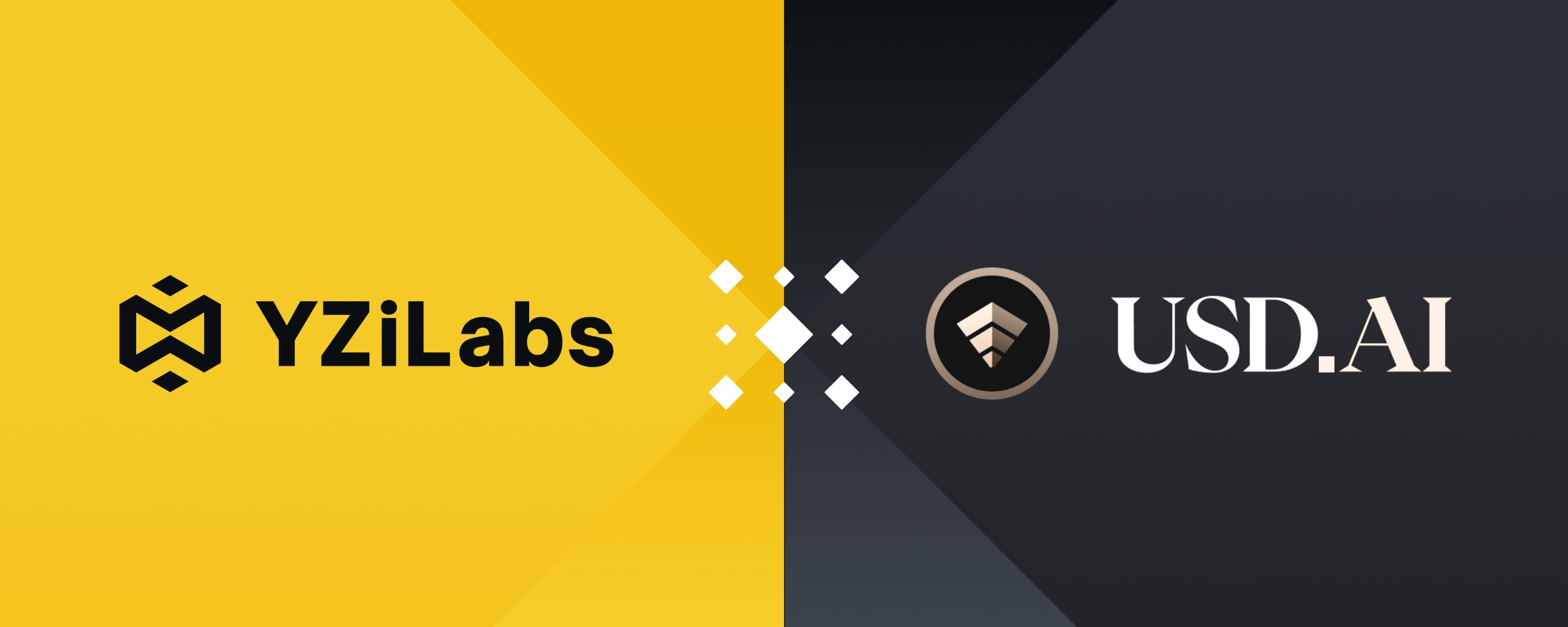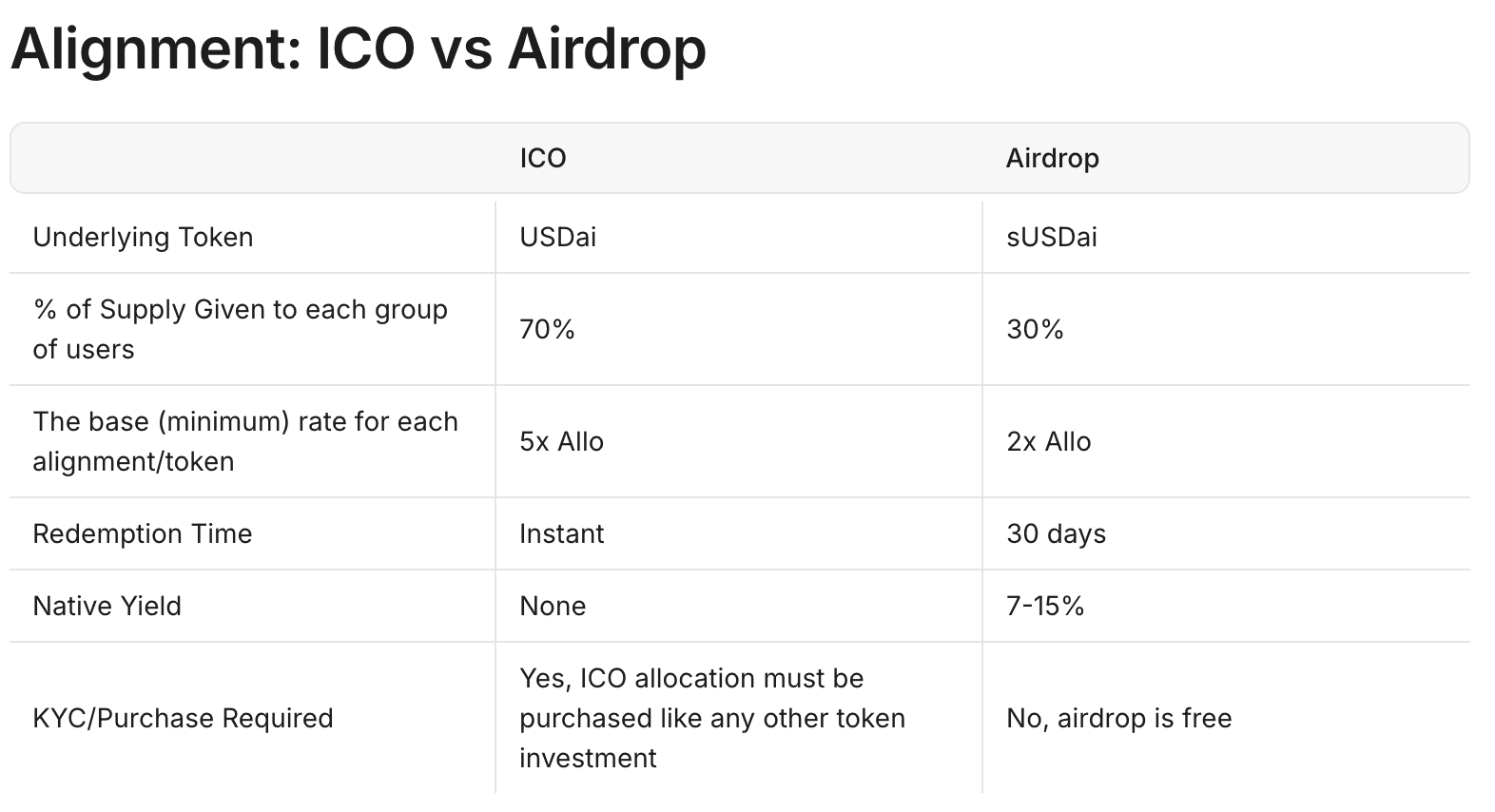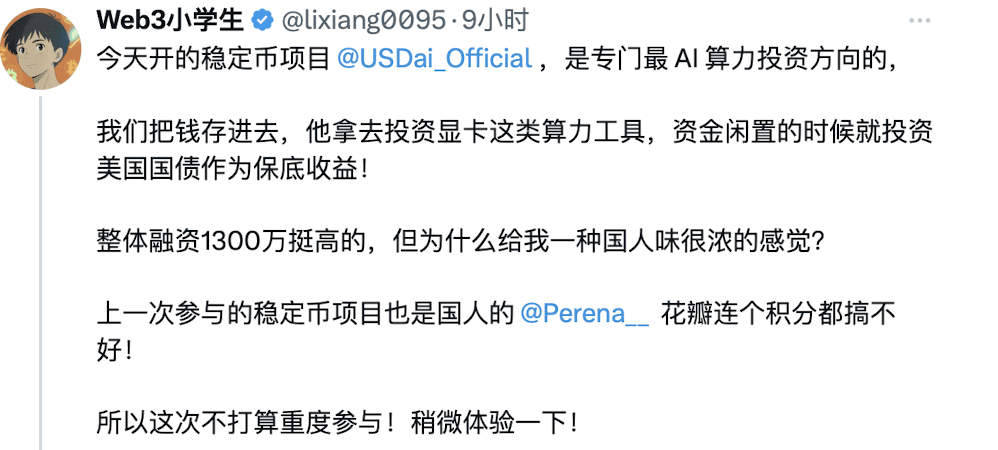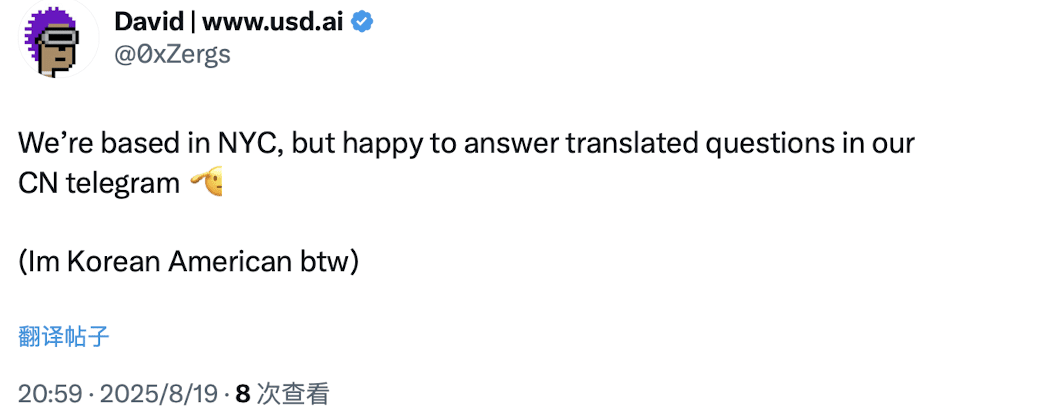Original Title: (Invested by YZi Labs, Detailed Explanation of USD.AI Stablecoin's New Gameplay)
Original Author: Umbrella, Deep Tide TechFlow
On August 26, YZi Labs announced a strategic investment in USD.AI, a stablecoin protocol providing hardware collateral financing for AI infrastructure.

According to Coingecko data, the current global stablecoin market capitalization has exceeded 285 billion USD. Major players like Circle and Kraken are also entering the stablecoin payment chain.
However, the vast majority of current stablecoin projects still primarily peg to the US dollar and US Treasury bonds, with overall innovation being somewhat lacking and generally 'lacking imagination.' In this context, a distinctive challenger is entering the market with a new approach.
Recently, a unique stablecoin project USD.AI that integrates DePIN, RWA, and AI has sparked heated market discussions. It does not simply peg to the US dollar but generates returns through AI hardware collateral, filling the financing gap for computing resources.
Recently, USD.AI officially launched and opened the deposit channel, rapidly increasing in popularity. This could bring new opportunities for the fusion of AI and stablecoins.
Project Background
According to Rootdata, the project was established in 2024, and on the project team side, one of USD.AI's core founders, David Choi, is the co-founder and CEO of the well-known NFT lending platform MetaStreet, and was previously an investment banking analyst at Deutsche Bank.
What truly brought USD.AI into the spotlight is its striking financing background.
On the 14th of this month, USD.AI announced the completion of a 13.4 million USD Series A financing round, led by Framework Ventures.
As an investment institution focused on DeFi and infrastructure, Framework Ventures has previously supported star projects like Uniswap and ChainLink. Its participation in leading USD.AI reflects institutional recognition of the project's innovative value. Other investors are equally strong, including well-known crypto VC Dragonfly, Layer2 network giant Arbitrum, and the recently IPO-listed popular exchange Bullish.

The luxurious lineup of this financing round not only injects strong resources into USD.AI but also validates the appeal of stablecoin projects that combine DePIN and AI to top-tier capital, significantly raising market expectations for it. After the financing information was released, the USD.AI team quickly took action and officially launched on the 19th, sparking widespread market discussion.
Operation Principles and Core Mechanisms
In the context of increasing demand for AI computing power, the design of USD.AI combines stablecoin protocols with AI infrastructure financing to address issues that other projects in the current market have not tackled.
Small and medium-sized AI companies possess valuable GPU hardware but struggle to obtain operational funding through traditional channels.
The core goal of the project is to support the hardware procurement and operation of AI companies through on-chain capital, filling the financing gap of traditional finance in the new AI economy, while maintaining the low-risk characteristics of stablecoins.
USD.AI revolves around the closed-loop system of 'collateral-mint-invest-return,' combining popular concepts of RWA and AI, showcasing its unique innovative advantages in this wave of stablecoin.
The operation principle of USD.AI begins with users pledging stablecoins like USDT or USDC as collateral to mint USDai stablecoins at a 1:1 ratio. USDai is backed by US Treasury bonds and mainstream stablecoins to achieve a peg to the US dollar price with instant redemption capability and certain liquidity, making it suitable for trading or providing liquidity within the DeFi ecosystem. Users can further choose to stake USDai to obtain sUSDai tokens, then participate in other DeFi projects to earn additional returns, achieving a 'one fish, multiple meals' effect.
USD.AI uses the funds deposited by users for investments in two types of assets: first, providing loans to AI companies for purchasing GPUs and other hardware, generating high interest, with the current official website displaying an annualized yield of 6.96%; second, if funds are idle, they will be invested in US Treasury bonds to provide stable base returns. sUSDai holders can amplify their returns through DeFi protocols, with the project's official website giving a target annualized yield of 15%-25%, while USDai holders enjoy low-risk stable returns.

The core mechanism of USD.AI includes several key components to ensure its innovation and stability:
1. Dual Token System: USDai serves as a low-risk stablecoin suitable for users seeking stability; sUSDai is aimed at investors seeking high returns, providing flexibility and risk exposure. This design meets the needs of users with different risk preferences while maintaining compatibility within the DeFi ecosystem.
2. Asset Tokenization and Caliber Framework: Through the CALIBER framework, USD.AI tokenizes physical assets like AI hardware into on-chain assets, ensuring asset ownership is transparent and legally binding through legal and technical means. The on-chain insurance mechanism further reduces default risk.
3. QEV Redemption Mechanism: To address the long-term and low liquidity of AI infrastructure assets, USD.AI has designed the QEV mechanism to manage sUSDai redemption requests through a market-driven approach, avoiding the inefficiency of first-come-first-served, while ensuring the fairness and stability of the protocol.
4. FiLo Curator Expansion Mechanism: This mechanism allows the protocol to introduce new borrowers on a large scale, expanding the AI infrastructure investment portfolio, while maintaining user interests through structural protections and risk alignment mechanisms, ensuring the diversity and sustainability of revenue sources.
In summary, the funds deposited by users into USD.AI will be used to lend to AI companies needing computing power for hardware like GPUs to earn interest, with full transparency and traceability. If funds are idle, they will be used to purchase US Treasury bonds for guaranteed returns.
USD.AI's innovative mechanism gives it a unique competitive advantage, achieving higher returns through AI infrastructure investments compared to traditional stablecoin projects; in contrast to high-risk DeFi protocols, its risk isolation and insurance mechanisms significantly reduce systemic risk.
USD.AI not only injects new vitality into the stablecoin market but also provides a scalable solution for the capital needs of the AI economy, aiming to become a pioneering project in the integration of stablecoins and AI infrastructure.
Participation Method
The USD.AI project has now opened up user deposits and invites other users to earn rewards in the USD.AI rewards system, Allo points.
Users can obtain final token rewards through two methods: ICO and airdrop. All participants will enter at a project valuation with a circulation of 30 million USD (corresponding to 10% of a total FDV of 300 million USD).
According to official tweets, minting or staking USDai will continuously generate points every day in the future, and users can choose different strategies to determine their final allocation for ICO or airdrop rewards.
The Allo points activity will end when YPO (cumulative paid earnings) reaches 20 million USD. Users choosing ICO allocations need to go through KYC, while those choosing airdrop do not need to go through KYC.
More advanced methods to earn Allo points can be learned through the introduction video in the official tweet.

Simply put, if you want to participate in the project ICO, just hold USDai, and if you want to participate in the airdrop, you need to stake USDai to obtain sUSDai.
Currently, purchasing USDai or sUSDai will grant qUSDai, which serves as a deposit queuing proof and will automatically convert to the corresponding token within 24 hours.
USD.AI currently has a total deposit cap of 100 million USD. Since all purchased funds are currently in qUSDai status, the current TVL only shows 52 million USD deposited during the testing phase.

Market Discussion
The current market's view on the USD.AI project shows a polarization.
Supported users generally believe that USD.AI is a stablecoin project with unique innovations, combining current popular AI concepts, allowing users to enjoy AI dividends while ensuring stable returns. It offers various participation strategies so that different types of users can find suitable options, combining the 'stability' characteristic of stablecoins while also providing high-risk, high-reward choices.

On the other hand, users with opposing views believe that the current information disclosed by USD.AI indicates that its team background may be predominantly Chinese, and that the project merely piles up popular concepts without substantial innovation.

Interestingly, USD.AI's core founder David just replied to this FUD tweet, calling himself a Korean-American, and stated that the project headquarters is located in New York, but he is very willing to answer questions for Chinese users.

The author believes that USD.AI does provide a different answer to the popular stablecoin track, but whether it can gain market favor and recognition will depend on whether people are willing to 'vote with their feet' to quickly fill the one hundred million USD TVL cap.
The success or failure of this project will also serve as a litmus test for the market's acceptance of the emerging narrative of 'AI infrastructure + stablecoin.'
Original Link

